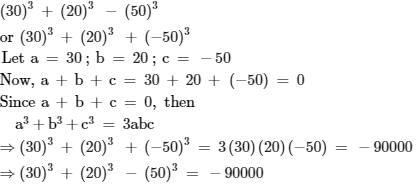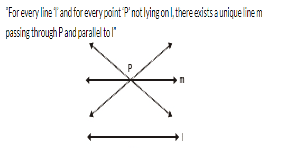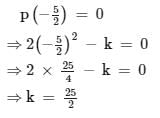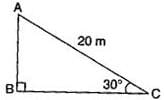KVS TGT Math Mock Test - 7 - KVS PGT/TGT/PRT MCQ
30 Questions MCQ Test - KVS TGT Math Mock Test - 7
Select the correct option in order to complete the analogy.
Paw : Cat :: Hoof : ?
'जब तुम आओगे तब वह खाना खायेगा ' रचना के आधार पर वाक्य भेद बताइए।
निम्नलिखित प्रश्न में, चार विकल्पों में से, उस विकल्प का चयन करें जो विलोम शब्द का सबसे अच्छा विकल्प है I
मूक
Paper spreadsheets can have all the same advantages as an electronic spreadsheet except which of the following?
During adolescence the peer group becomes more important because
A. The general feeling is that the peers understand them more than their parents.
B. Everybody is going through the same conflicts and problems.
If the area and circumference of a circle are numerically equal, then its radius is
For every line l and for every point P not lying on it there exist a unique line which passes through P and is
................. to l.
If 9 times the 9th term of an A.P. is equal to 11 times the 11th term , then its 20th term is
How many points can be common in two distinct straight lines?
Which of the following can not be the probability of an event?
In fig., if AB = AC and PB = QC, then by which congruence criterion PBC ≅ QCB
If p – 1, p + 3, 3p – 1 are in A.P., then p is equal to:
Given that two of the zeros of the cubic polynomial ax3 + bx2 + cx + d are 0, the value of c is
If (2x + 5) is a factor of 2x2 – k, then the value of k is.
If A and B are the angles of a right angled triangle ABC, right angled at C, then 1+cot2A =
The product of a non zero rational and an irrational number is
The volume (in cm3) of a right circular cone of height 12 cm and base radius 6 cm, is :
A circus artist is climbing a 20 m long rope, which is tightly stretched and tied from the top of a vertical pole to the ground. If the angle made by the rope with the ground level is 30°, then the height of the pole is
Direction: In the following questions, a statement of assertion (A) is followed by a statement of reason (R). Mark the correct choice as:
Assertion : Zeroes of f(x) = x2 - 4x - 5 are 5, - 1
Reason : The polynomial whose zeroes are 2 + √3, 2 - √3 is x2 - 4x + 7.







 with m = 2 , n = 3.
with m = 2 , n = 3.















